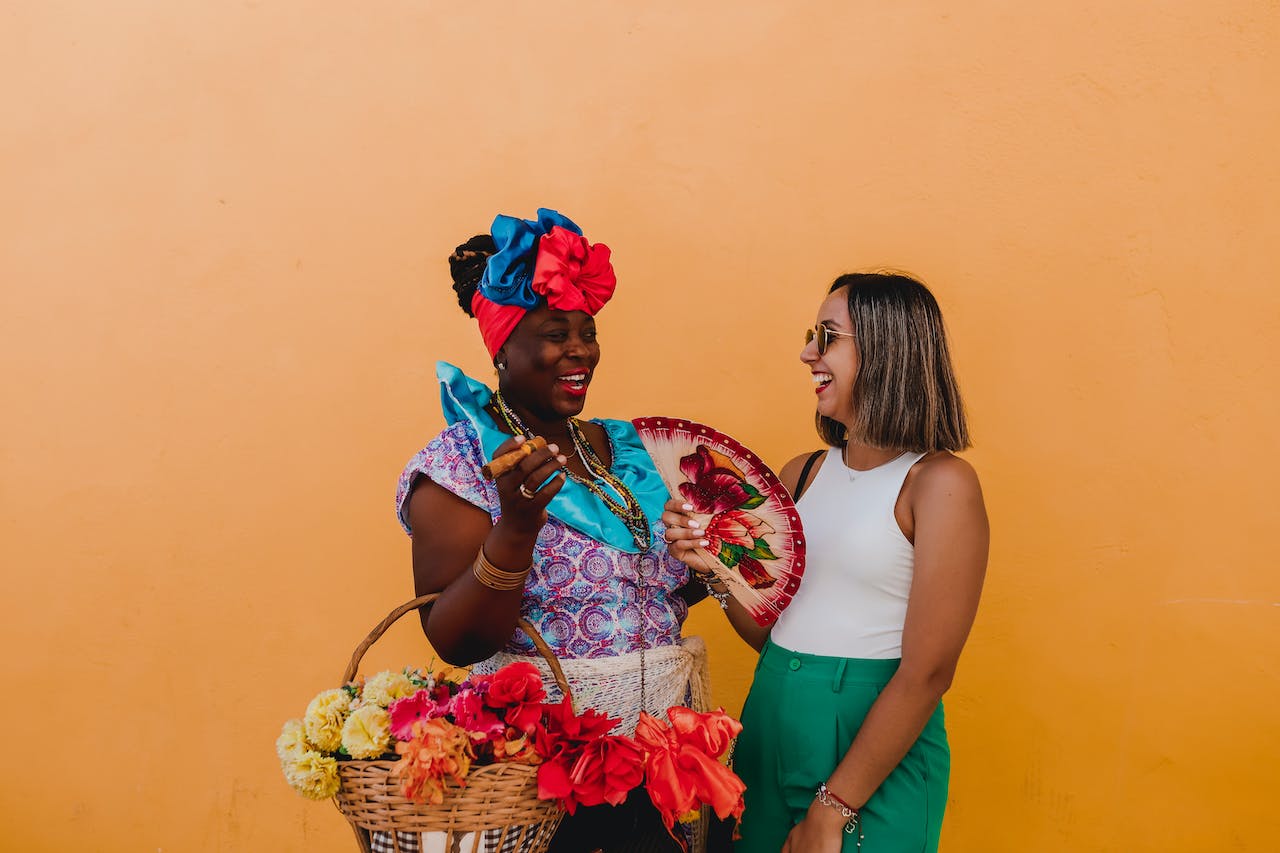Body Culture: Body Positivity And Acceptance Of One's Appearance

In a world where social media constantly bombards us with picture-perfect images, and glossy magazines showcase seemingly flawless bodies, it's easy to feel overwhelmed and self-conscious about our own appearance. The pressure to conform to societal beauty standards has taken a toll on many, leading to self-esteem issues, body dissatisfaction, and even mental health problems. But thanks to the body positivity movement, we are reminded that all bodies are beautiful, and self-acceptance is the ultimate goal.
In this article, we'll explore the wonderful world of body culture, understanding what it means to be body positive, and how embracing your unique beauty can change your life.
What is Body Positivity?
Body positivity, or "body pos" for short, is a social movement that encourages people to embrace and love their bodies, regardless of their shape, size, or appearance. It's a pushback against the unrealistic beauty standards that have plagued our society for years. The central message of body positivity is simple: every body is beautiful, and we should celebrate our uniqueness rather than striving for an unattainable ideal.
A Brief History of Body Positivity
The roots of body positivity can be traced back to the 1960s, but it gained momentum and visibility in the 2000s with the emergence of social media. Early proponents like Marilyn Wann, author of "Fat! So?" and Beth Ditto, the lead singer of the band Gossip, played crucial roles in promoting the movement.
With the rise of platforms like Instagram, Tumblr, and Twitter, body positivity began to flourish. The movement saw individuals from all walks of life - celebrities, influencers, and everyday people - sharing their stories and images that defied conventional beauty standards. The hashtags #bodypositive and #effyourbeautystandards started trending, amplifying the message that it's okay to love your body just the way it is.
The Key Principles of Body Positivity
So, we know what body positivity is. Now, let’s break it down into some key principles:
- All Bodies Are Good Bodies
One of the fundamental tenets of body positivity is the idea that there's no such thing as a "bad" or "ugly" body. Every body is unique, and each has its own inherent beauty.
- Self-Love and Acceptance
Body positivity encourages individuals to accept themselves as they are, without feeling the need to change their bodies to conform to societal norms.
- Inclusivity
This movement is inclusive, embracing people of all genders, races, abilities, and backgrounds. It aims to create a safe space for everyone to share their experiences and challenges.
- No Body Shaming
Body positivity actively opposes any form of body shaming, including fat-shaming, skinny-shaming, and any derogatory comments or actions based on appearance.
- Media Literacy
It promotes critical thinking about the media's portrayal of beauty and encourages individuals to challenge unrealistic beauty standards.
Loving Yourself: The First Step to Body Positivity
Body positivity begins with self-love. Learning to love and accept yourself is an ongoing journey, but it's a crucial step toward embracing body positivity. Here are some tips to help you on your path to self-acceptance:
1. Practice Self-Compassion
Be kind to yourself. When you look in the mirror, replace self-criticism with self-compassion. Treat yourself as you would treat a dear friend. Remember that it's okay to have imperfections; they make you unique.
Moreover, take a break from media that promotes unrealistic beauty standards. Unfollow accounts on social media that make you feel inadequate, and instead, follow those that promote body positivity and self-acceptance.
2. Challenge Negative Thoughts
Negative thoughts about your body are like weeds in a garden; they can take over if you let them. Challenge these thoughts when they arise and replace them with positive affirmations. Instead of saying, "I hate my body," try saying, "I appreciate my body for what it does for me."
Moreover, surround yourself with people who uplift you and support your journey toward self-acceptance. It's easier to love yourself when you're surrounded by positivity.
3. Focus on What Your Body Can Do
Shift your focus from appearance to function. Your body is an incredible machine capable of doing amazing things. Appreciate it for the experiences it provides, like dancing, hugging, or simply breathing.
The Role of Social Media in Body Positivity
One of the most significant ways the beauty industry affects us is through social media. Beauty influencers like Huda Beauty, with her makeup tutorials and product reviews, have millions of followers. They can make us feel like we need all the latest beauty products to look good. It's like they're setting the beauty standards, and we want to meet them.
Hence, the power of social media in shaping the body positivity movement cannot be overstated. It has become a platform for individuals to share their stories, struggles, and triumphs. Instagram, in particular, has been a driving force for the movement, with countless users posting unfiltered and unretouched images of themselves, showcasing their bodies just as they are.
The "before and after" culture of Photoshop and filters has given way to a new era of authenticity. Influential figures like Ashley Graham, Lizzo, and Jameela Jamil have used their social media presence to challenge the beauty industry's norms and promote self-love.
The Influence of the Beauty Industry
The beauty industry has long been a driving force behind the promotion of unattainable beauty standards. Cosmetic companies, fashion magazines, and even some fitness programs have historically pushed the narrative that a specific body type is the epitome of beauty. For instance, in "Mean Girls," Regina George is a perfect example of how the beauty industry influences people. She's the "Plastic" queen bee, and she's idolized for her looks. This shows how people in the beauty industry, like makeup artists and influencers, can shape our idea of what's beautiful and desirable.
Moreover, beauty standards often reflect cultural values and trends. In the 1920s, the "flapper" look with short hair and bold makeup was all the rage. In the 1950s, Marilyn Monroe's curvy figure was the ideal. These examples show how beauty ideals can change over time and influence how we see ourselves. This can lead to unrealistic expectations and unhealthy behaviors, such as extreme dieting, cosmetic surgery, and excessive exercise.
However, in recent years, we've seen positive changes within the beauty industry. More brands are recognizing the importance of inclusivity and are making efforts to diversify their marketing campaigns. They are starting to promote a wider range of skin tones and body types. Plus-size models, people with disabilities, and individuals from various racial backgrounds are finally receiving representation. This shift is a win for the body positivity movement, as it reinforces the idea that beauty comes in all shapes, sizes, and colors.
The Power of Self-Expression
Body positivity doesn't just stop at embracing your own body; it also encourages self-expression. This means dressing, styling, and decorating your body in ways that make you feel confident and empowered. You don't need to adhere to someone else's idea of fashion or beauty; you have the freedom to define it for yourself.
Embracing self-expression through clothing, makeup, or tattoos can be a way to reclaim your body and make a statement about who you are. It's about taking control of your own narrative and showing the world that your uniqueness is something to celebrate.
The Importance of Mental Health
The relationship between body positivity and mental health is undeniable. When individuals feel good about their bodies and themselves, they are more likely to experience positive mental well-being. However, when people are constantly battling self-esteem issues and body dissatisfaction, it can take a toll on their mental health.
Body positivity can be a game-changer for those struggling with their self-esteem. It encourages self-acceptance, which, in turn, can lead to improved mental health. When we learn to love our bodies, we often find greater overall contentment, decreased anxiety, and improved self-esteem.
The Need for Education
Teaching body positivity in schools and at home is crucial to creating a future where individuals are less likely to internalize negative messages about their bodies. The education system should include discussions about media literacy, self-acceptance, and the importance of diversity.
Parents, too, play a significant role in fostering body positivity in their children. Encouraging open conversations about body image, providing positive role models, and emphasizing the importance of inner qualities over external appearance are all ways parents can support their children in developing a healthy relationship with their bodies.
The Intersection of Body Positivity and Health
Critics of the body positivity movement argue that it promotes an unhealthy lifestyle. They fear that celebrating all body types might discourage individuals from pursuing healthier habits. However, it's essential to clarify that body positivity is not about promoting unhealthy living. Instead, it's about accepting your body as it is in the present moment.
That said, body positivity does not conflict with striving for a healthier lifestyle. In fact, it can be a source of motivation. When individuals love and respect their bodies, they are more likely to make choices that prioritize their health. It's important to differentiate between body positivity and body acceptance, the latter being a personal journey while the former is a societal and cultural shift.
How to Promote Body Positivity?
Promoting body positivity is a crucial endeavor, and it's important to approach it from various angles to make a lasting impact. Here are some steps to elaborate on, along with additional strategies to promote body positivity:
- Lead by Example: Be a role model by embracing your own body and promoting self-acceptance. Your personal journey can inspire others.
- Create Safe Spaces: Foster environments where people feel comfortable discussing their body image issues without judgment. This can be done in both physical and digital spaces.
- Promote Intersectionality: Acknowledge that body positivity should be inclusive of all races, genders, ages, abilities, and backgrounds. Address the unique challenges faced by various communities.
- Advocate for Policy Changes: Support policies that discourage discrimination based on appearance, such as workplace dress codes that are inclusive of diverse body types.
- Art and Creativity: Encourage artists and content creators to use their platforms to challenge body image stereotypes through art, music, and other creative expressions.
- Social Media Campaigns: Launch or support social media campaigns that raise awareness and challenge societal beauty norms.
- Involve Men: Emphasize that body positivity is not solely for women. Men also face body image issues and should be encouraged to join the movement.
- Mentoring Programs: Develop mentoring programs where individuals can connect with mentors who have successfully navigated their own body positivity journeys.
- Engage with Healthcare Providers: Encourage healthcare providers to promote well-being over weight loss, focusing on holistic health and mental well-being in addition to physical health.
- Avoid Body Shaming: Make a conscious effort to eliminate body shaming or negative body comments in your conversations and online interactions.
- Fundraise and Donate: Contribute to organizations and charities that work towards promoting body positivity and offer support to individuals struggling with body image issues.
- Public Speaking and Advocacy: Raise awareness by speaking at events, writing articles, or participating in advocacy efforts to reach a broader audience.
- Self-Compassion: Encourage practicing self-compassion and mindfulness as key elements in building self-esteem and self-acceptance.
Remember that promoting body positivity is an ongoing journey, and it's essential to be patient and understanding as people work towards accepting and loving their bodies. By combining these strategies, you can create a more inclusive and accepting community or workplace.
Conclusion
Body positivity is a powerful movement that encourages individuals to embrace and love their bodies just as they are. It's about accepting your uniqueness, challenging unrealistic beauty standards, and fostering positive mental health.
By practicing self-acceptance, challenging negative thoughts, and promoting a culture of inclusivity and diversity, we can all contribute to this transformative movement. Remember, your body is a unique work of art, and it's time to celebrate it!
So, go ahead, rock those stretch marks, love your curves, and be unapologetically you. Your body is your own masterpiece, and it's time to appreciate it in all its glory.























